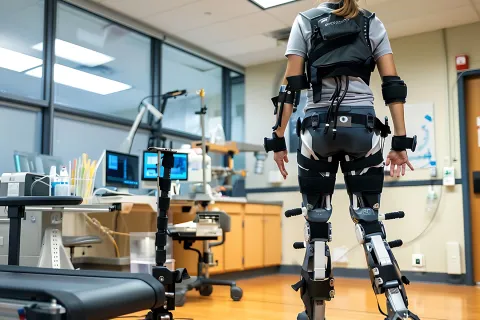
Combination products, which are innovative therapeutic and diagnostic products that combine drugs, devices, and/or biological products, are becoming increasingly prevalent in the healthcare industry. In China, the registration of these products is governed by specific Regulatory frameworks that help ensure their safety, efficacy, and quality. This blog aims to provide an overview of the combination product registration process in China, highlighting the significance of the National Medical Products Administration (NMPA), the required documentation, registration pathways, and challenges faced by manufacturers.
The National Medical Products Administration (NMPA), which is a government agency responsible for overseeing the registration of all medical products entering China, ensures that these products meet the necessary standards before they can be placed on the market. Additionally, the Pharmacopoeia of the People’s Republic of China and the State Health Commission play significant roles in setting standards and guidelines for the quality of pharmaceuticals, including combination products.
In China, the classification of combination products is based on their Primary Mode of Action (PMOA). The PMOA refers the single mode of action of a combination product that provides the most important therapeutic effect of the product. The following three (03) factors are considered for determining the PMOA of a product:
- The applicant’s suggestions on the attributes of the combined product, which include their perspective on the primary therapeutic effect of the product.
- The PMOA for achieving the intended use, which is identified as either a pharmacological, immunological, or metabolic action if the product is drug-led, or a physical/mechanical action if it is device-led.
- The basis for determining the PMOA, which should include supporting data from tests and literature reviews. This evidence should systematically demonstrate the primary therapeutic effect of the product.
However, when the applicant cannot determine the attributes of their drug-device combination product, they should apply to the Standards Management Center of NMPA to get the definition of the product before applying for registration. The Standards Management Center will review the application and provide a determination of the product’s attribute, based on its PMOA. Once the applicant receives the definition, they can proceed with the registration. The classification process for combination products ensures that they are regulated appropriately, according to their primary PMOA, thus ensuring safety and efficacy for the end-users.
A manufacturer typically needs to submit the following documents to register their drug-device combination product in China:
- An application form for defining the attributes of their drug-device combination product.
- Supporting materials for the product, which may include:
- Product Description: Name of the combined product, composition, combination method, intended use, contact site with the patient, the contact time, product schematic diagram, and actual photographs.
- Quality Management System (QMS) documents related to product development and production, including a detailed description of the production process and a production process flow chart.
- Information on the main control points and projects, sources of the primary raw materials and purchased parts, and details of quality control methods.
- Additional documents that supplement the product information, if applicable.
- Comparative explanation of the production conditions and production processes, if applicable.
- Relevant industry standards that the product adheres to, such as the Pharmacopoeia of the People’s Republic of China, GB/T standards, or ASTM standards.
- The registration master document, owner information, as well as information on the legal representative, their contact details, and the address of the production unit.
- If the drug or medical device contained in the combination product has been approved for marketing in China or the country (region) of production, the manufacturer should submit the corresponding marketing certification documents.
- If the drug or medical device contained in the combination product has not been approved for marketing in China or the country (region) of production, the manufacturer need not provide marketing certification documents.
This is just a general list, and the specific documents required may vary, depending on the type of combination product and the current regulations at the time of application. It is therefore advisable to consult NMPA’s latest guidelines for up-to-date requirements.
The registration pathway for combination products in China is determined by the primary function of a product. If the product mainly functions as a drug, it should be registered in accordance with drug requirements. Conversely, if the product’s primary function is that of a medical device, it should be registered following medical device requirements. Manufacturers face several hurdles while registering their combination products in China since the registration process is intricate and ever-changing. Some of the key challenges they can face are elucidated below:
- Understanding Regulatory Adjustments: Manufacturers must stay informed about the latest Regulatory changes, such as revisions to the definition of drug-device combination products and adjustments in functional departments, processes, timelines, work requirements, and application dossier requirements.
- Determining Attributes: Determining the attributes of a drug-device combination product can be complex. As stated earlier, if a manufacturer is unable to determine the attributes of their product, they must apply to the Standards Management Center for a definition before proceeding with registration.
- Application Dossier Requirements: Manufacturers need to ensure that their application dossiers meet the specific requirements for drug-device combination products, which may differ from those for drugs or devices alone.
- Technical Review Requirements: Manufacturers must understand and comply with the technical review requirements, which can be complex and may involve addressing product risk points and review concerns.
- Domestic Equipment Catalog: There is an ongoing effort to promote the formulation of a “stuck neck” catalog for domestic high-end medical equipment, which may impact the registration process for certain products.
- Consultation and Communication: Manufacturers may need to engage in consultations and communications with Regulatory bodies, which may include attending symposiums, participating in interviews, and conducting field research.
- Keeping Up with Guidelines: Manufacturers must be aware of and adhere to the guidelines prepared with the support of Regulatory offices and experts, which are designed to be scientific, comprehensive, and practical.
To overcome these challenges, manufacturers must be well-versed in the Regulatory landscape of combination products in China, maintain open lines of communication with the Regulatory authorities, and be prepared to navigate the complexities of the registration process.
Thus, the registration of combination products in China is a meticulous process, and thus, manufacturers must stay informed about the latest guidelines and standards, prepare a complete set of required documents, and be prepared to address the challenges that arise during the registration process. By adhering to the NMPA’s requirements and seeking expert guidance, when necessary, they can successfully navigate the pathway to bringing their innovative combination products to the Chinese market.
To know more about the combination products requirements in China, reach out to our Regulatory experts today!









